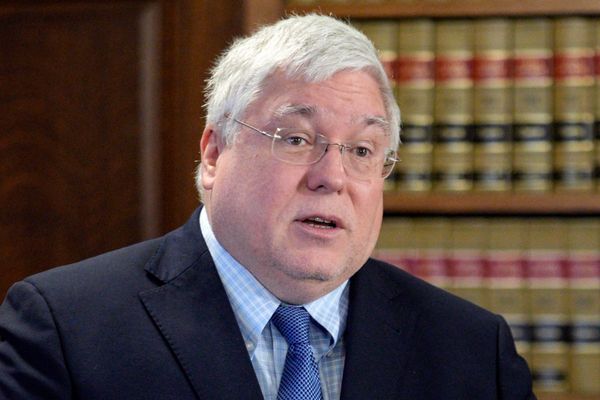
Dubai (AFP) - The conflict in Yemen between the Iran-backed Huthi rebels and pro-government troops escalated in March 2015 when a Saudi-led military coalition intervened in support of the loyalists.
The civil war has killed hundreds of thousands of people, directly and indirectly, according to the United Nations.
A truce in place since April ended on Sunday with no agreement to renew.
Here is an overview of the conflict:
2015: Saudi steps in
Huthi fighters from the Zaidi Shiite minority, which had opposed the central government for a decade, launch an offensive in mid-2014, seizing swathes of territory.
Their conquests include the capital Sanaa and the Red Sea port of Hodeida, a crucial entry point for imports and humanitarian aid.
The Saudi-led coalition comes to the embattled government's aid on March 26, 2015, launching air strikes on the rebels.
The intervention is requested by Yemeni President Abedrabbo Mansour Hadi, who moves to the southern city of Aden after the Huthi takeover of Sanaa.
The United States says it is contributing logistics and intelligence to the coalition.
Initial coalition wins
On March 27, the coalition says it has full control of Yemen's airspace and has destroyed aircraft seized by the Huthis.
As the rebels advance on Aden, Hadi flees, first to Oman and then Saudi Arabia.
But the coalition helps pro-government forces secure Aden, which becomes the government's interim capital, with Sanaa still under rebel control.
In October, pro-government forces announce they have retaken control of the Bab al-Mandab Strait, one of the world's most strategic waterways.
2018: Battle for key port
In June 2018, pro-government fighters, backed by Saudi and Emirati ground forces, launch an offensive to retake Hodeida, the entry point for 90 percent of Yemen's imports.
United Nations-brokered talks in Sweden between the government and Huthi rebels open in December, yielding breakthroughs including a ceasefire in Hodeida.
However, fighting continues intermittently.
2019: Saudi oil hit
In September 2019, aerial assaults claimed by the Huthis on two facilities run by energy giant Aramco in eastern Saudi Arabia temporarily knock out half of the kingdom's crude production.
Riyadh and Washington accuse Iran of being behind the attack, which it denies.
Saudi Arabia's oil infrastructure is again hit in March 2022, when a Huthi drone attack on an Aramco facility in the west of the country results in a "temporary reduction" in output.
- 2021: New escalation -
In early 2021, the Huthis resume an offensive to seize oil-rich Marib province, the government's last northern stronghold, as well as intensifying drone attacks against Saudi Arabia.
The upsurge in violence coincides with Washington ending its support for coalition military operations and removing the Huthis from a blacklist of "terrorist" organisations.
2022: Rebels turn on UAE
The United Arab Emirates -- which announced a withdrawal of its troops from Yemen in 2019 but is still part of the Saudi-led coalition -- is hit by a Huthi drone-and-missile assault on January 17, 2022.
The attack, which killed three oil workers in the capital Abu Dhabi, is the first deadly assault on the UAE claimed by the rebels and the first in a series of attacks.
Washington announces in February it is sending the guided missile destroyer USS Cole and fighter jets to Abu Dhabi to bolster its defences.
- Humanitarian crisis -
The UN describes the situation in Yemen as the world's worst humanitarian crisis.
Around 80 percent of its 30 million people depend on some form of aid for survival, but the UN warns aid agencies are being forced to slash "life-saving" programmes due to a shortfall in funding.
A UN donor conference on March 16, 2022 raises only $1.3 billion in funding for Yemen, despite seeking $4.27 billion.
UN agencies warn that up to 19 million people could need food assistance in the second half of 2022, with the number of people starving in famine conditions projected to increase five-fold over the year to 161,000.
2022: Six months of truce
A UN-brokered truce goes into effect on April 2 and brings a sharp reduction in hostilities.Its terms include resuming commercial flights from Sanaa, allowing fuel shipments into the rebel-held port of Hodeida and opening talks about lifting the six-year Huthi blockade of Taez, Yemen's third biggest city.
Despite sporadic clashes, the two-month truce is renewed in June and again in August.
By September, aid groups say it has reduced casualties by 60 percent, quadrupled fuel imports into Hodeida and allowed 21,000 Yemenis to seek medical, education or business opportunities outside the country.
The UN's special envoy, Hans Grundberg, attempts to extend the truce to six months and expand its terms to include paying civil servants' salaries and opening routes into Taez.
However, the Huthis reject the proposal and the October 2 deadline passes without agreement.
burs/dwo/th/hc







